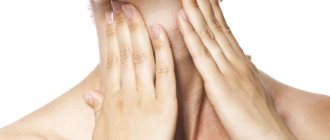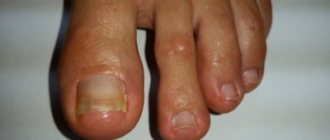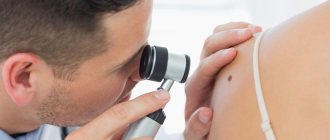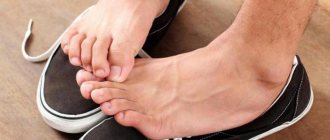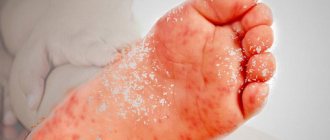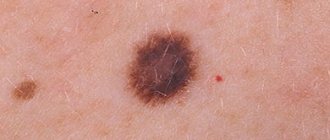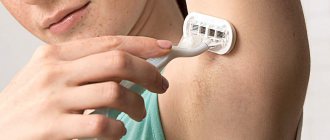What does it look like?
Warts are small, dry, flesh-colored lumps. They have a rough surface and are sometimes painful. On the hands, this can lead to a pronounced cosmetic defect.
When warts appear on the feet, severe pain appears, making it difficult to walk. Another type of wart, genital warts, develops on the genitals. This can make intimate relationships difficult. It is important to note that in women, condylomas of this localization can be caused by strains of the virus that increase the risk of cervical cancer.
Such situations require immediate treatment.
The wart grows and itches
Some patients complain that the wart itches and enlarges.
Should I worry about this?
In most cases it's not worth it.
Because an enlarging wart is a completely normal phenomenon.
It indicates that the virus has become more active.
HPV initiated pathological cell division.
The result is overgrowth of the papillary layer of skin.
The activity of the virus does not only lead to the enlargement of the wart.
It can also cause itching.
But in some cases, pathological changes in skin growths indicate the beginning of an oncological process.
Sometimes warts develop into squamous cell skin cancer.
How high the risk of degeneration is depends on the type of virus that caused the formations on the skin.
This type of cancer occurs more often in men.
Since HPV is transmitted sexually, the primary tumor often occurs on the penis.
The incidence of this localization of the oncological process in developing countries reaches 20%.
Women may also develop vulvar cancer.
In both sexes, the primary tumor may appear in the anus.
The main types of HPV that provoke malignant transformation: 16, 18, 31, 33, 35, 45.
Risk factors for a wart turning into a tumor:
- long-term insolation (sunbathing, solarium)
- immunodeficiency states
- HIV
- taking immunosuppressants
- photochemotherapy
- arsenic
- radiation therapy
Just by itching and an increase in size of the wart, a tumor cannot be suspected.
It also has other signs.
The main ones are keratinization.
A dense red plaque appears at the site of the wart.
Erosion often forms in its center.
On palpation, the wart becomes hard.
Enlargement of the lymph nodes is often noted.
What is the best way to treat?
Warts can be removed in almost any way. The surgical method, electrocoagulation, laser and cryodestruction, as well as radio wave surgery are used.
Radio wave surgery
, in my opinion, is a more effective method that allows you to remove wart tissue under visual control. When using this method, the tissue is not burned, but is excised along with a small piece of healthy skin. Thus, the likelihood of warts reappearing becomes minimal.
See all photos before and after removal
Histological examination during removal is mandatory if there is the slightest doubt.
What to do if a wart itches
If the wart itches, turns red, ulcerates, or quickly increases in size, you should see a doctor.
Because complications are possible.
The most dangerous of them is malignancy of the skin formation.
That is, it can turn into cancer.
The risk of degeneration can be assessed in advance, even before the appearance of pathological symptoms.
To do this, scrape the skin.
The resulting material is examined by PCR for oncogenic types of papilloma viruses.
All viruses can have an oncogenic risk:
- short
- average
- high
Highly oncogenic types are not so common.
But they are the ones that cause the most cases of squamous cell carcinoma.
If during the study no oncogenic types of the virus were detected, this indicates that malignant degeneration of the wart is unlikely.
If they are identified, then the risk is high.
In this case, patient monitoring is required.
He himself must carefully monitor his warts.
If signs of degeneration appear, you should consult a doctor to undergo examination and receive treatment.
It is even better to remove all formations so that they definitely do not degenerate into cancer.
After removal, the wart is sent for histological examination.
It allows you to evaluate the structure of the tissue and find out whether there are signs of a malignant tumor.
Removal of plantar warts
Peculiarities
When removing spines, you need to consider the following features:
1. Location on the sole increases the wound healing time (due to constant mechanical impact, sweating, etc.).
2. They are always removed deeply, forming a “crater”. Superficial removal is fraught with the risk of leaving the “roots” of the wart and recurrence.
3. “Home treatment” with folk remedies is undesirable, because with it, it is not possible to achieve the optimal depth of exposure, or, on the contrary, extensive chemical burns occur with various substances used for these purposes.
HPV and warts
HPV is a whole group of viruses that infect humans. Several dozen strains of HPV can live in the body of one person, but this does not pose any threat to health if you have a strong immune system and do not have serious chronic diseases that weaken it. HPV does not manifest itself in any way until the body’s immune functions decrease to a certain level. If you notice warts on yourself, you should think first not about the aesthetic appearance of your skin, but about your health.
It is worth understanding that HPV is not some rare disease. It occurs in at least half of the world's population, it simply does not manifest itself, and is dangerous only in a number of cases.
Infection with the human papillomavirus occurs during sexual intercourse or kissing, when sharing personal hygiene items - towels, washcloths, nail scissors, etc.
Causes
The onset of the disease is preceded by the introduction of viral particles into the skin (we are talking about papillomavirus).
When immunity decreases, HPV actively multiplies, causing characteristic growths to appear on the skin. Infection can occur in the following ways:
- when shaking hands with an infected person;
- through holders in public transport;
- when using towels from a sick household member;
- through contaminated manicure instruments.
The risks increase with hyperhidrosis of the hands and damaged skin (infection occurs especially often in winter, when the skin dries and cracks due to the cold).
Features, symptoms of plantar warts
The spine is a compaction on the plantar surface of the foot with a diameter of 2 to 10 mm (sometimes more). The formation resembles a small callus, which can be either flush with the skin or slightly raised above it. The presence of microscopic dark spots on the surface (thrombosed capillaries) is considered characteristic. Color – from white-yellow to brown. The wart is dense to the touch, pressing on it causes pain.
The spine differs from ordinary warts and papillomas in its higher density, as well as pain when pressed. This is due to the fact that, due to their location, they are always subject to pressure and stress, which causes them to become keratinized; in appearance they sometimes resemble small calluses. The same factor causes pain - when pressed, a dense wart presses on deeper tissues, causing pain (a comparison with a pebble in a shoe is appropriate here).
Removal of plantar warts should be carried out by a specialist. Attempts at self-removal, as well as treatment with folk remedies, are usually ineffective, because the spines are highly dense and have deep “roots.” Superficial removal (cutting with forceps after steaming, applying celandine, aloe, etc.) usually leads to relapse.
Types of warts and specific symptoms:
- Molluscum contagiosum
. Localization - on the body or in the genital area. There are depressed areas on the surface. If you press on the wart, a mushy substance may begin to ooze. - Nevi
. May be a congenital problem, raised significantly above the surface of the skin. Characterized by a dark brown color, as well as the presence of hair. - Basalioma
. It has a crust on the surface; if it is removed intentionally or accidentally, bleeding begins.
Removing an itchy wart
Warts on any part of the body can be removed.
They may appear on the back, legs, arms or face.
In the genital area, warts that itch can also be removed.
The procedure has two goals:
- aesthetic – a person with warts looks ugly, but after their removal his appearance improves
- medical - distant formations are not capable of degenerating into cancer
There are many ways to remove warts that itch.
The oldest of them is cryodestruction.
Warts are simply frozen with liquid nitrogen.
After this they are rejected.
But this method is not always effective.
It removes the formations themselves, but does not destroy viruses.
Therefore, cryodestruction is undesirable when there is a high oncogenic risk.
Liquid nitrogen does not remove warts that are too large.
Because they cannot always be completely frozen.
And with increasing application time, the risk of scar formation increases.
This is possible when cold damages the deep layers of the skin.
Cryodestruction has one more drawback.
If there is a suspicious wart that itches and enlarges, it cannot be sent for histological examination.
Because during removal it is destroyed.
The wart is destroyed rather than separated from the body.
Accordingly, there is simply nothing to send for histology.
In our clinic, for large warts, other methods of removing them are used.
We use laser, electrocoagulation, and radio wave removal.
We consider the latter method to be the optimal choice.
Because with radio wave removal of warts:
- no damage to deep layers of skin
- the wart is separated from the body, and tissue is preserved that can be sent for histological examination
- minimal risk of scarring
The procedure is performed under local anesthesia.
During removal of the formation, the patient does not feel pain.
Symptoms of warts
Signs of warts in children depend on the type of tumor:
- Ordinary, or vulgar. These are the most common growths that have a stalk. The formations are round, ball-like, rising above the skin. Common warts are characterized by uniform pigmentation, and hair growth is possible in the central part. The formations do not bother the child, do not hurt or itch. Vulgar warts form on the legs, arms, and back.
- Youthful, or flat. This type appears in children over 5 years of age. The formations are clear, irregular in shape, do not rise above the skin and do not have a stalk. They are slightly pigmented, the surface is even and smooth. A distinctive feature of this type of wart is the formation of several growths in one area of the body. They are localized on the face, neck, lower legs, hands and never appear in the armpits or skin folds.
- Pointed, or condylomas. Pink growths consisting of multiple neoplasms of the papillary structure. This type of wart appears on areas with thin skin, genitals, and mucous membranes.
- Acrochords, or filamentous. Long, elongated neoplasms that appear on the face and in the armpits. They do not differ in color from the surrounding tissues and grow quickly. Warts are clearly visible, easily injured and cause discomfort.
- Plantars, or spinules. The growths are located on the foot under the big toe, have a deep root, round shape and resemble calluses. Pathologically changed areas of the dermis hurt when walking. To detect warts in time, parents should regularly examine the child's body while bathing or changing clothes.
